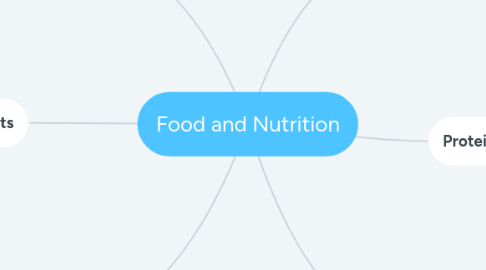Food and Nutrition
저자: Shari Garcia-Perez

1. Nutrients
1.1. supply energy
1.2. provide materials for growth an maintenance of body tissue
1.3. regulate body processes
2. Fruits
2.1. major contributor of vitamins A, C, potassium, folate and dietary fiber.
2.2. choosing a variety of fruits that are different colors improves nutrient intake
2.3. children 2-3 years old need 1 cup daily
2.4. children 4-8 years old need 1-1 1/2 cups daily
3. Grains
3.1. whole grains provide complex carbohydrates, B vitamins, minerals, and dietary fiber.
3.2. whole grains ae known to decrease the risk of chronic diseases, such as diabetes, heart disease and hypertension
3.3. whole grain products retain all of their original nutrients an are an ideal source of dietary fiber
4. Vegetables
4.1. contribute notable amounts of minerals, vitamins and fiber
4.2. daily food selection should include dark green vegetables such as broccoli and leafy greens
4.3. daily food selection should include orange-red foods such as sweet potatoes, squash, tomatoes and carrots
5. Proteins
5.1. proteins- class of nutrients used primarily for structural and regulatory functions
5.2. food such as beef, pork, chicken, seafood, eggs and beans play an important role in promoting children's growth
5.3. provide B vitamins, iron, zinc, and magnesium
6. Dairy
6.1. includes milk and milk-based products that retain their calcium content such as home-made pudding, frozen yogurt, ice cream; hard cheeses, soft cheeses an calcium fortified soy milk
6.2. supplies mineral calcium which is essential for healthy bone development and tooth formation
6.3. dairy is a primary source of dietary calcium, potassium, and vitamin D


